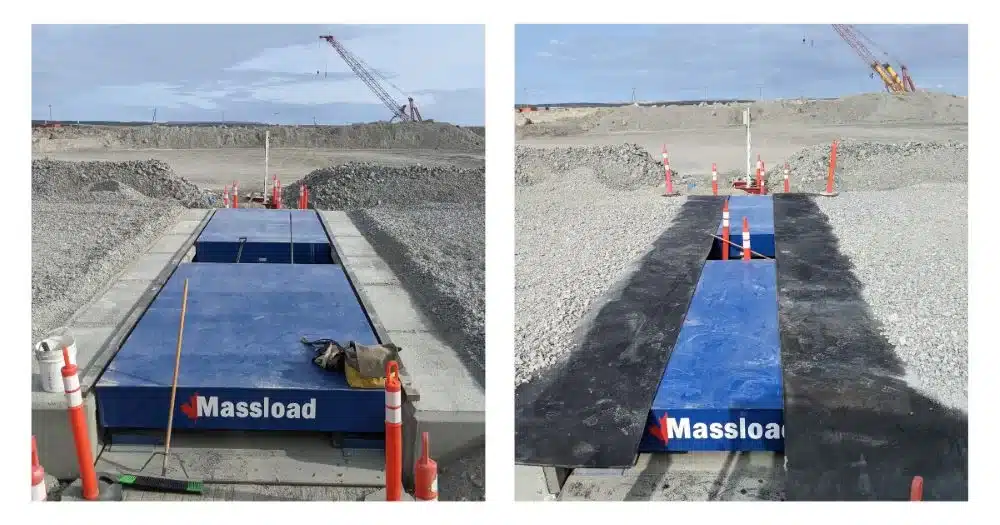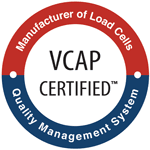 January 3, 2024
January 3, 2024
In the diverse and challenging world of mining, the accuracy and reliability of weighing equipment are non-negotiable.
At Massload Technologies, we understand that the right mining scale can significantly impact your operations cost, improving efficiency and safety.
This guide will help you navigate the complexities of choosing the most adequate scale for your mining operations.
What is a Mining Scale?
Mining scales are large scales designed to accurately measure the weight of large quantities of materials.
Here’s an overview of how they work:
Load Cells
The core component of a mining scale is the load cell, a type of transducer that converts a mechanical force (in this case, weight) into an electrical signal. When a truck or load is placed on the scale, the force exerted on the load cells causes a deflection, which is measured.
Signal Conversion
The load cells send this weight information as an electrical signal to a digital display or computer system. The intensity of the signal correlates to the amount of force, which is then converted into a weight reading.
Material Weighing
In mining operations, trucks loaded with extracted materials drive onto the scale. The scale measures the weight of the vehicle and its contents. By subtracting the empty weight of the vehicle, the net weight of the material can be determined.
Advanced features can also include:
Data Management
Modern mining scales can be connected to data management systems for recording, tracking, and managing weight data. This information is crucial for inventory management, billing, and complying with regulatory requirements.
Remote Monitoring
Some scales are equipped with remote monitoring capabilities, allowing for the wireless transmission of data to a central system or office.
Applications of Mining Scales in the Mining Industry
Massload’s expertise shines in addressing diverse mining needs:
- Above Ground Mining Vehicle Scale: Designed for the rugged mining environment, these scales weigh vehicles efficiently.
- Underground Mining Vehicle Weighing: Tailored for the unique challenges of weighing underground mining or utility vehicles.
- Mining Hoist Rope Load Pins: Essential for monitoring the load on hoist ropes, ensuring safe and efficient lifting operations.
- Galloway/Workstage Load Monitoring: Provides real-time load data for work stages, crucial for balancing and safety.
- Headframe Sheave Load Monitoring during Shaft Sinking: Critical for the safe and efficient sinking of mine shafts.
- Shaft Girder Hoisting: Ensures the safe and accurate hoisting of girders in shaft construction or refurbishment.
- Surge Bin Weighing: Offers precise weight measurements of materials in surge bins for monitoring the material handling process and ensuring center of gravity is maintained with suspended bins
- Conveyor Belt Tension Monitoring: Vital for maintaining optimal tension, thus prolonging belt life and preventing downtime.
Custom Design Projects for Companies and OEMs: Massload excels in creating bespoke solutions for specific needs.
Best Weigh Scales for the Mining Industry
Massload’s array of mining scales includes:
- Truck Scales: Robust and reliable, ideal for weighing large vehicles laden with mined materials.
- Portable Mining Scales: Flexible and easy to move, these scales are ideal for various locations in a mining site.
- Load Pins and Tension Monitors: Precise and durable, these are crucial for safety and operational efficiency.
- Conveyor Belt Scales: Perfect for continuous weighing of materials on conveyor belts.
Each type of scale has its specific applications and advantages. You can learn more about each one of them by visiting our application page with all our Mining Solutions.
Key Features to Consider
When selecting a mining scale, consider the following:
- Accuracy and Precision: Essential for operational efficiency and regulatory compliance.
- Durability and Robustness: High-grade materials ensure longevity in harsh mining conditions.
- Ease of Use: Intuitive interfaces and connectivity options for efficient operations.
- Maintenance Needs: Low maintenance requirements save time and costs.
- Integration Capability: Compatibility with other systems for streamlined workflow.
- Safety Features: Overload protection and compliance with safety standards.
- Customization: Solutions tailored to unique operational needs.
- Cost-Efficiency: Focus on long-term savings through quality and reliability.
- Environmental Considerations: Energy-efficient and environmentally conscious designs.
Choosing the Right Mining Scale for Your Industry Needs
Selecting the most suitable mining scale is a critical decision. Here’s how to ensure you make the right choice:
1. Understand Your Operation’s Specific Needs
- Weighing application: There are many applications for mining scales and various ways to implement weight monitoring activities. Start by analyzing the most appropriate application, whether for above-ground or below-ground mining vehicles, hoists, sheaves, galloway work stages, conveyor belts or surge bins, or general hoisting.
- Volume and Capacity: Assess the typical volume and weight of materials your operation handles. Ensure the scale you choose can comfortably handle your maximum expected load.
- Type of Material: Consider the material type. Different scales might be better suited for different materials, such as loose vs. packed and solid vs. liquid.
- Environment: The environmental conditions of your mining site play a crucial role. Factors like temperature extremes, moisture, dust, and corrosive elements can affect a scale’s performance and longevity.
2. Consider An Above Ground Scale’s Location and Installation
- Above-Ground vs. Pit-Type: Decide based on your available space and the ease of vehicle access. Above-ground scales may require additional space for ramps, while pit-type scales are level with the ground but might need more maintenance due to debris accumulation.
- Space Constraints: Evaluate the space available at your site. Ensure there is adequate room not just for the scale but also for safe and easy maneuvering of vehicles.
3. Evaluate Technology and Features
- Connectivity and Data Integration: In the digital age, having a scale that can easily integrate with your existing data systems for tracking and analysis is invaluable.
- Automation Capabilities: Automated scales can increase efficiency and reduce the need for manual operation, thereby reducing the potential for human error.
4. Assess Durability and Maintenance Requirements
- Material and Build Quality: Look for scales made with high-grade materials that can withstand the harsh mining environment.
- Maintenance Ease: Consider how easy it is to maintain and calibrate the scale. Frequent downtime for maintenance can be costly.
5. Budget and Long-Term Costs
- Initial Investment vs. Long-Term Value: While the upfront cost is a significant factor, consider the long-term value. A cheaper scale that requires frequent repairs or replacement might end up costing more in the long run.
- Operational Costs: Factor in the costs of maintenance, calibration, and potential downtime. A scale that’s more expensive upfront but offers lower operational costs can be a more economical choice over its lifespan.
Choose the Right Scale for Lasting Performance With the Help of Massload Technologies
Selecting the ideal mining scale goes beyond measuring materials—it’s a multifaceted decision. Balancing operational needs with budget constraints, safety standards, and long-term efficiency is crucial. At Massload Technologies, we understand the significance of this decision in the mining world, where each modification requires careful planning. Our goal is to make this journey easier for you.
Explore our Mining Vehicle Scales and other Mining Solutions to discover products that deliver top-notch performance, precision, and resilience over time. There’s no need to make this decision alone—our team of experts is ready to guide you. Contact us today, and together, let’s find the scale solution that best suits your current operations and adapts to future growth and changes.


